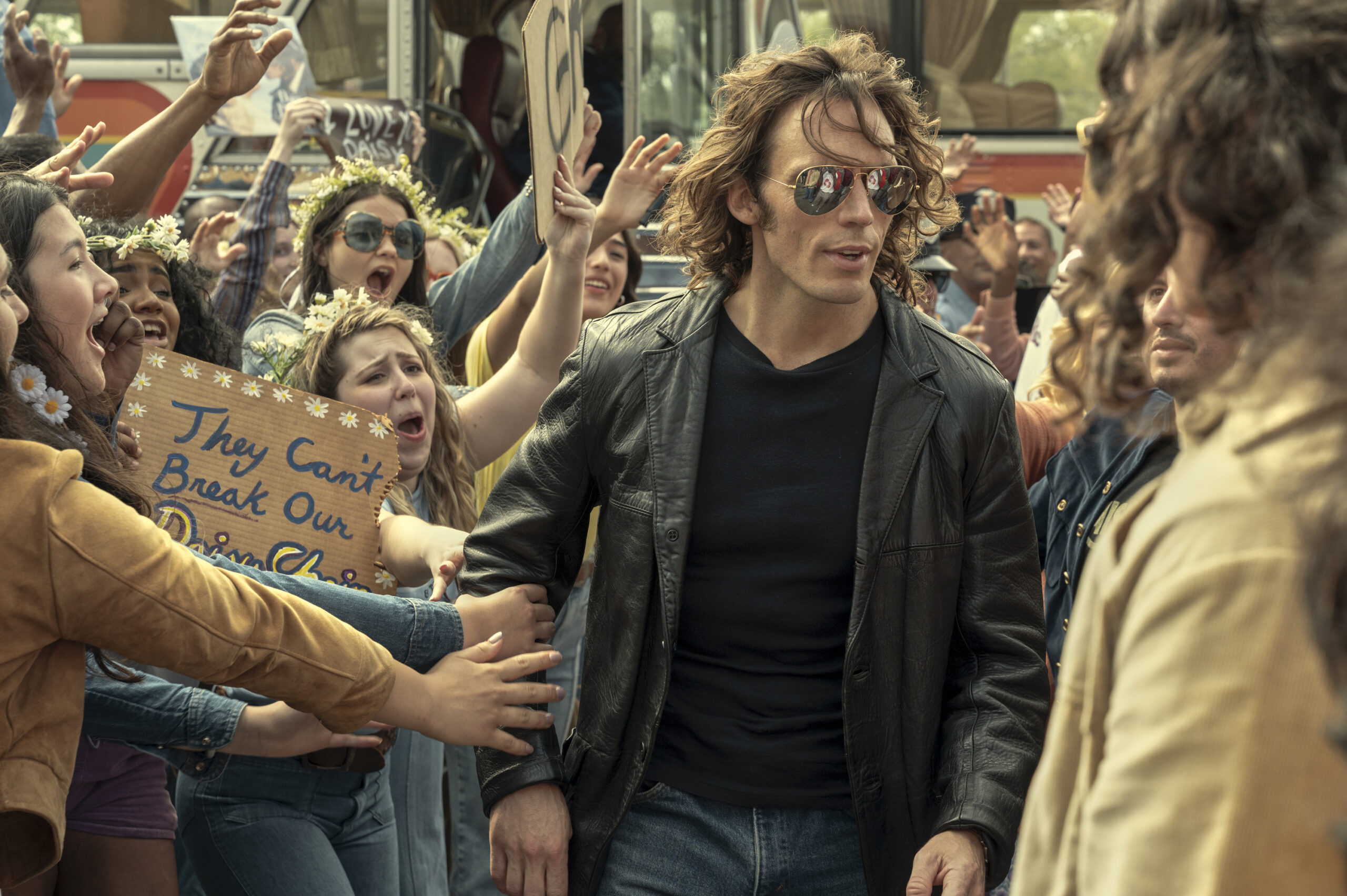The fictional 1970s rock band “Daisy Jones and the Six,” inspired by Fleetwood Mac, are working towards becoming the iconic band the series sells them as in the first three episodes released by Amazon Prime on March 2. We meet Daisy (Riley Keough), the discontented, free-spirited daughter of wealthy parents and Billy (Sam Claflin), a domineering personality who views the band as more his property than anything else. Adapted from the novel of the same name by Taylor Jenkins Reid, the series is set up as a documentary, interviewing the members of the band twenty years after their last performance together on their rise and fall from fame.
The series depends on two things to work: the music and the larger-than-life romance between Daisy and Billy that will eventually bring everything crashing down. But it’s still too soon to tell how Daisy and Billy’s relationship will pan out, as both of them meet for the first time while recording Billy’s new song, “Honeycomb” at the end of episode three. Perhaps in fleshing out their romance, the series finds its footing, as it feels much more at home with soap opera romance than the story of a band, as evidenced by Billy and Camilla’s (Camila Morrone)’s relationship.
The story seems unable to strike a balance between the personal and the musical, careening a little too much toward the former. We see Billy and Camilla’s romance bloom and then fall apart as he starts doing drugs and blooms again, while the rest of the band members serve as little more than awkward background decorations to this melodramatic soap opera.
The music doesn’t seem too promising either. Every song on the band’s album, “Aurora,” has the same pop beat and generic sound that will leave you wondering how this band became so world famous. Because of this, the big moment at the end of episode three when we hear Billy and Daisy sing together for the first time falls flat. Daisy’s story, meanwhile, feels a little more cohesive, as Keough channels the acerbic rock goddess-in-making who will soon become the lead singer for The Six. Following Daisy, as she flits about in the Los Angeles music scene and tries to find her voice, the series feels most like what it billed itself as the chaotic musician trying to make their voice heard.
The setting feels oddly sanitized. There is no sense of the nitty-gritty hedonism or glamour of 1970s rock. There are various scenes of drug use and sex, but they feel like a slight window dressing of depravity garnishing vanilla characters; antithetical to what the 70s rock scene was really like. Instead, it feels like a millennial imagination of what it was actually like, which could perhaps describe the series as a whole.
Verdict: The series begins with a slightly shaky start to the millennial-coated vehicle for seventies rock chaos, but still holds some promise.








